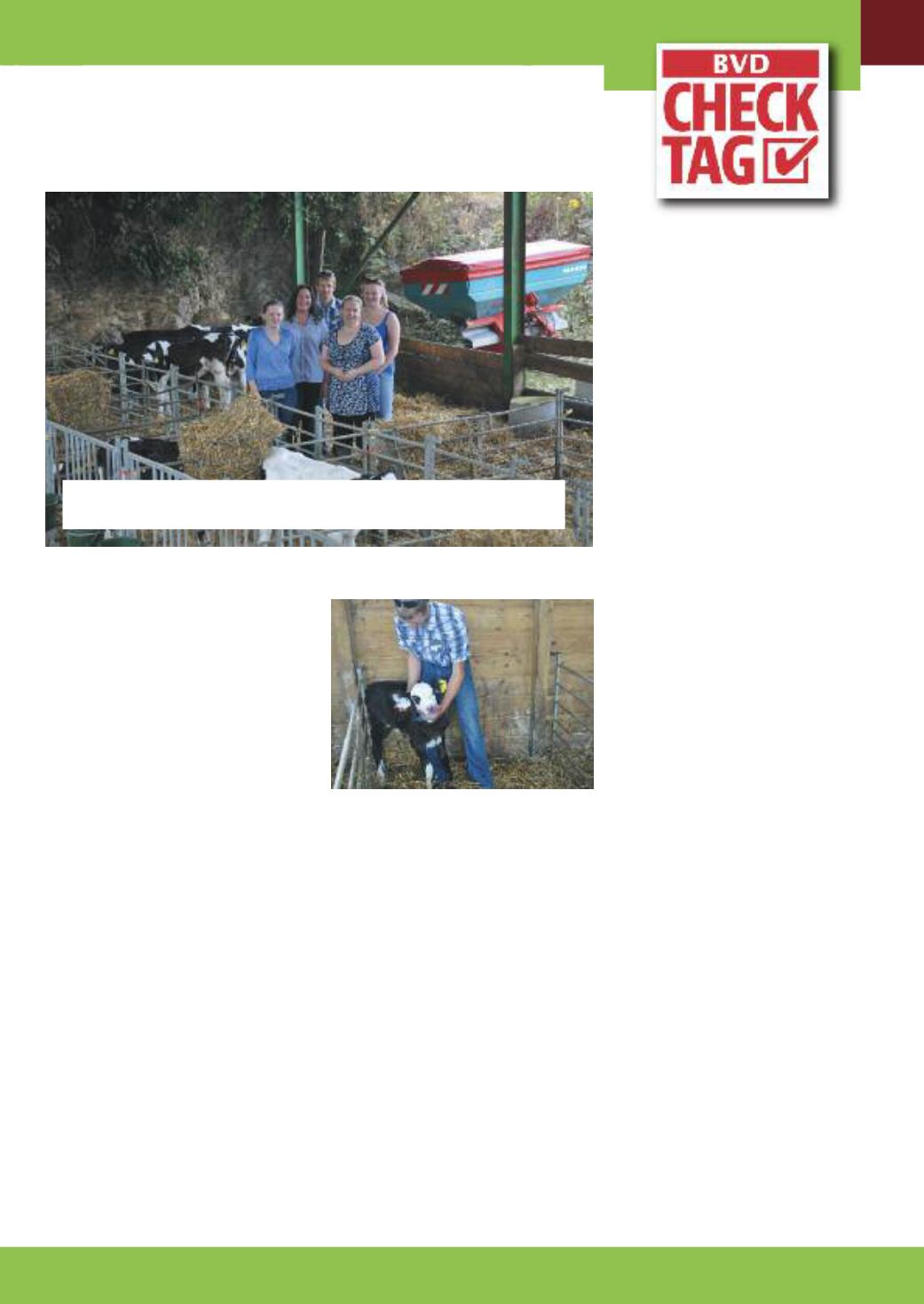
LIVESTOCK MATTERS - BVD SUPPLEMENT
they are more susceptible to other
disease challenges, so this is why we
were having so many problems.
“Now that we are on top of the BVD
the calves all look so much better and
we have reduced the losses right down
to less than 5%. Whereas we were
having a weekly trip to the kennels
we’re now seeing entire months
without any losses at all.”
Part of the protocol going forward is to
tissue test every calf at birth in order to
maintain a check on BVD status in the
herd. The special white BVD Check Tag
ear tags - part of a national scheme
being promoted by XLVets - take a
tissue sample when attached and this
sample is sent away in pre-addressed
envelopes for laboratory analysis.
Results are sent back within the week
to the farm and the farm vet, and all
calves with a negative result
(i.e. indicating they are BVD-free)
are entered onto a fully accessible
database.
“First and foremost this process allows
the dairy farm to maintain a routine
check that there is no BVD circulating
in the herd,” explains Stuart Gough.
“However, it offers wider value as any
calves sold off the dairy farm are then
identifiable as having been tested. This
provides a form of reassurance for the
buyer, who can check the calf’s status
on the database and download a
certificate confirming that it has tested
negative for BVD.
“In time we hope the scheme will
become widely known and accepted,
with the white BVD Check Tag ear
tags actually creating added value
for the seller.”
At Furslow Farm, the tendency is to
keep the majority of calves apart from
black and white bull calves that go to
the Poads eldest daughter Isobelle for
rearing. Nevertheless, the discipline of
tissue testing is being maintained as a
means of verifying that the herd is BVD
tested. The cost is roughly double the
£2-£3 normally paid for a tag, but this
is all-inclusive (postage, testing and
results service) and is now an integral
part of disease control in the herd.
“In addition to ensuring all adult cattle
are vaccinated and have their routine
booster, it is vital to ensure breeding
heifers commence their vaccination
programme before they are put in
calf,” adds Stuart Gough. “Timing of
vaccination and the removal of PIs from
the farm are two of the most important
areas in BVD control.”
In addition to the improvements in
calf health seen at Furslow Farm,
Steve Poad is pleased to confirm
improvements in herd fertility – with
fewer embryonic deaths and more
cows holding to service – and total
production per cow moving forward
past a 9,000 litre average. Control of
BVD is certainly a major factor, but so
is an added level of motivation
throughout a family team that is
once again optimistic for the future.
Currently at 180 cows, the aim is to
push herd numbers up above 200 in
the near future, and a decision has just
been taken to invest in three robotic
milking units – a resounding vote of
confidence and a clear signal that the
Poads are intending to be in milk
production for the long term.
The Poad family calf rearing team with Sarah Caldwell (second left)
amongst healthy calves in the rearing shed at Furslow Farm.
Ben Poad tags a new-born beef
cross calf with the BVD Check Tag.


